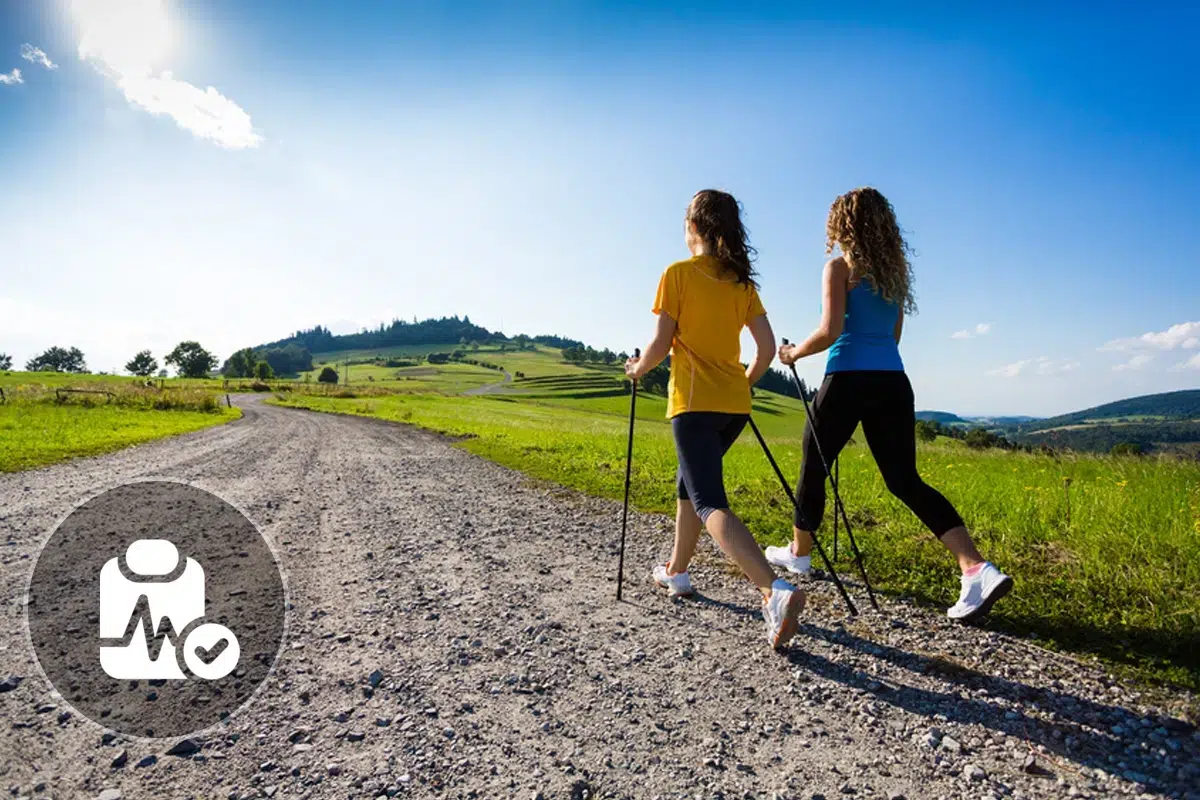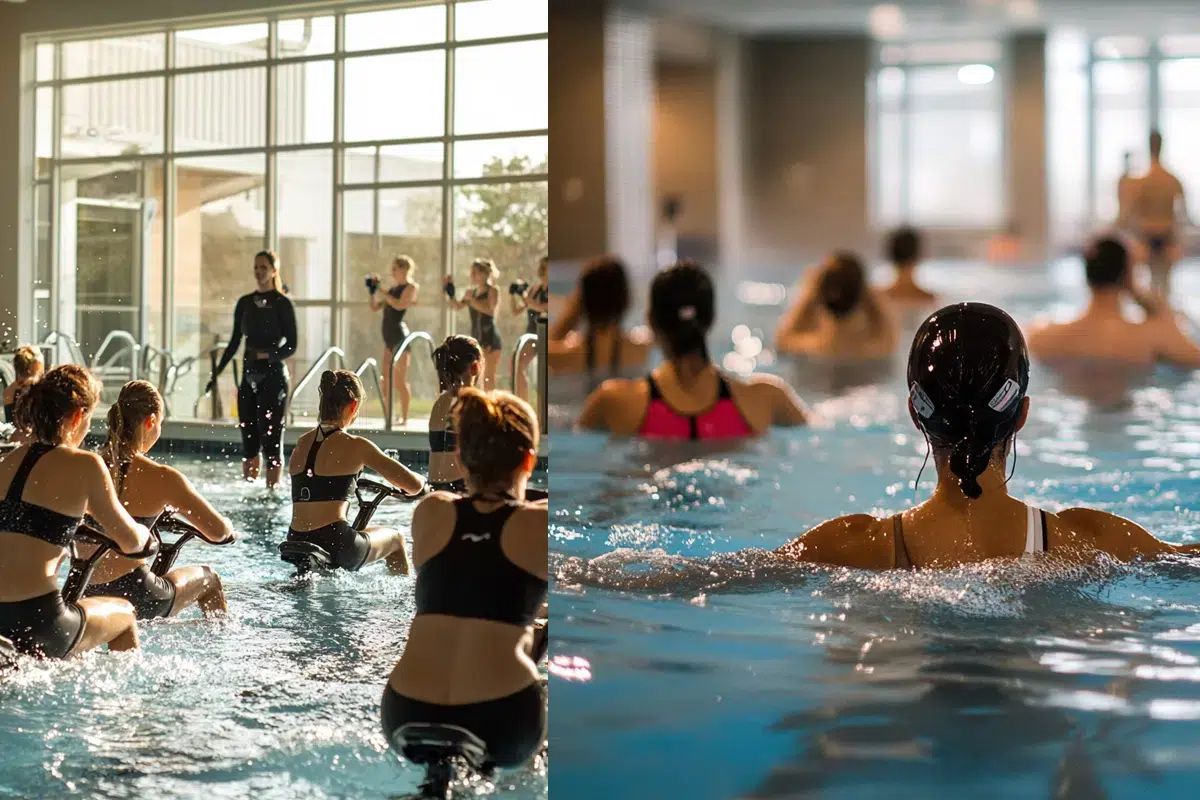Show summary Hide summary
- What are the health benefits of Nordic walking?
- More information about Nordic walking
- TOP 5 benefits of Nordic walking!
- Contraindications and disadvantages of Nordic walking
- What is Nordic walking? Information and practical advice!
- Other outdoor and nature sports: explore nature while staying active with outdoor sports
- Discover the health benefits of other sports!
What are the health benefits of Nordic walking?

Everything you need to know about Nordic walking
What are the health benefits of Nordic walking? Use the tool below to find out all the benefits of Nordic walking and discover whether this activity meets your goals and expectations.
More information about Nordic walking
Is Nordic walking good for your health? Is it a good sport that’s accessible to everyone? Whether you’re a beginner or an experienced walker, you’ll find a list below of the benefits and problems you may encounter when Nordic walking.

TOP 5 benefits of Nordic walking!
Nordic walking is a healthy way to improve both your well-being and your physical fitness. If you do it regularly, you’ll :
- Nordic walking is a gentle way to get back intoexercise
- Nordic walking stimulates the cardiovascular system and breathing
- Nordic walking protects joints and relieves back strain
- Nordic walking strengthens muscles and fortifies bones
- Nordic walking helps you get away from it all, relax and improve the quality of your sleep
Contraindications and disadvantages of Nordic walking
Nordic walking is accessible to everyone and requires no particular physical condition. There are no major contraindications. However, if you have any problems with your joints or lower limbs (ankle, knee or hip problems), it is advisable to seek your doctor’s advice.
What is Nordic walking? Information and practical advice!
Who can Nordic walking do ?
Do you want to get some exercise without pushing yourself too hard, while going a little further than ordinary walking or brisk walking?
Nordic walking, which originated in Finland in the 1970s, is a growing trend. Inspired by cross-country skiing, Nordic walking is accessible to everyone, regardless of age or physical condition. In short, Nordic walking is an all-in-1 getaway that lets you burn off energy, breathe in fresh air and meet new people.
When and how do you go Nordic walking?
Nordic walking differs from ordinary walking in that its pace averages between 7 and 9 kph. It is done in small groups. This outdoor exercise allows you to resume the natural movement of walking with poles. To help you choose the right poles, multiply your height (in cm) by 0.68. This will give you the size of pole you need. If, however, the result is between two pole sizes, opt for the smaller ones.
Even though Nordic walking is based on the natural movement of ordinary walking, don’t forget to :
- keep a straight spine posture
- keep your shoulders and arms relaxed
- roll your feet naturally from heel to toe
- breathe naturally
- wear a good pair of comfortable, lightweight shoes that will protect your heel while allowing your foot to roll naturally.
Other outdoor and nature sports: explore nature while staying active with outdoor sports
Outdoor sports are perfect for those who enjoy combining physical activity with nature. They offer an excellent opportunity to discover new landscapes while improving your physical fitness. Explore these outdoor sports to enjoy the great outdoors while training:
- Hiking: Trek natural trails to strengthen your heart and muscles.
- Horse riding: Develop balance and connection with horses during a horseback ride.
- Mountain biking: Improve agility and endurance on varied terrain with mountain biking.
- Power walking: Burn calories and improve cardiovascular health with brisk walking.
- Running: Increase endurance and overall well-being with running.
- Walking: Maintain health and improve fitness with daily walks.
Everything you need to know about Nordic walking
Discover the health benefits of other sports!
All sports in detail!




























































